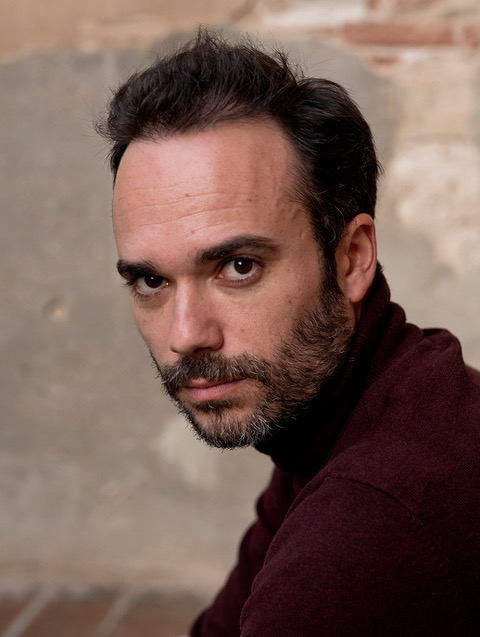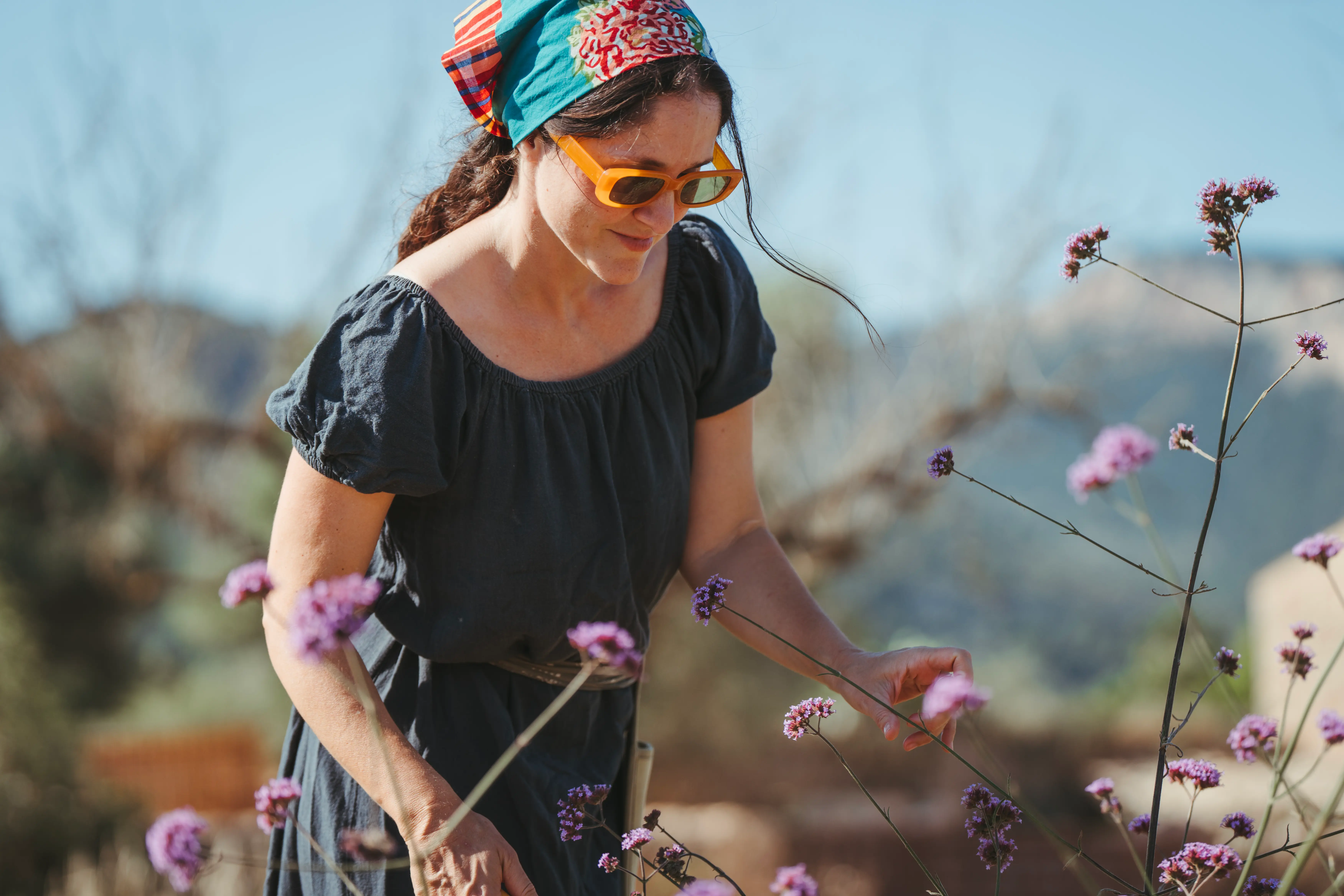
When I had my third child, Leni, I received flowers from friends abroad. They struggled to find a florist who could offer something both sustainable and contemporary. That experience sparked my curiosity. Soon after, I started researching how to grow flowers myself and took up an offer from my friend Larissa at Solu Farm to experiment with planting at their finca. That was the beginning of Serra Flowers.
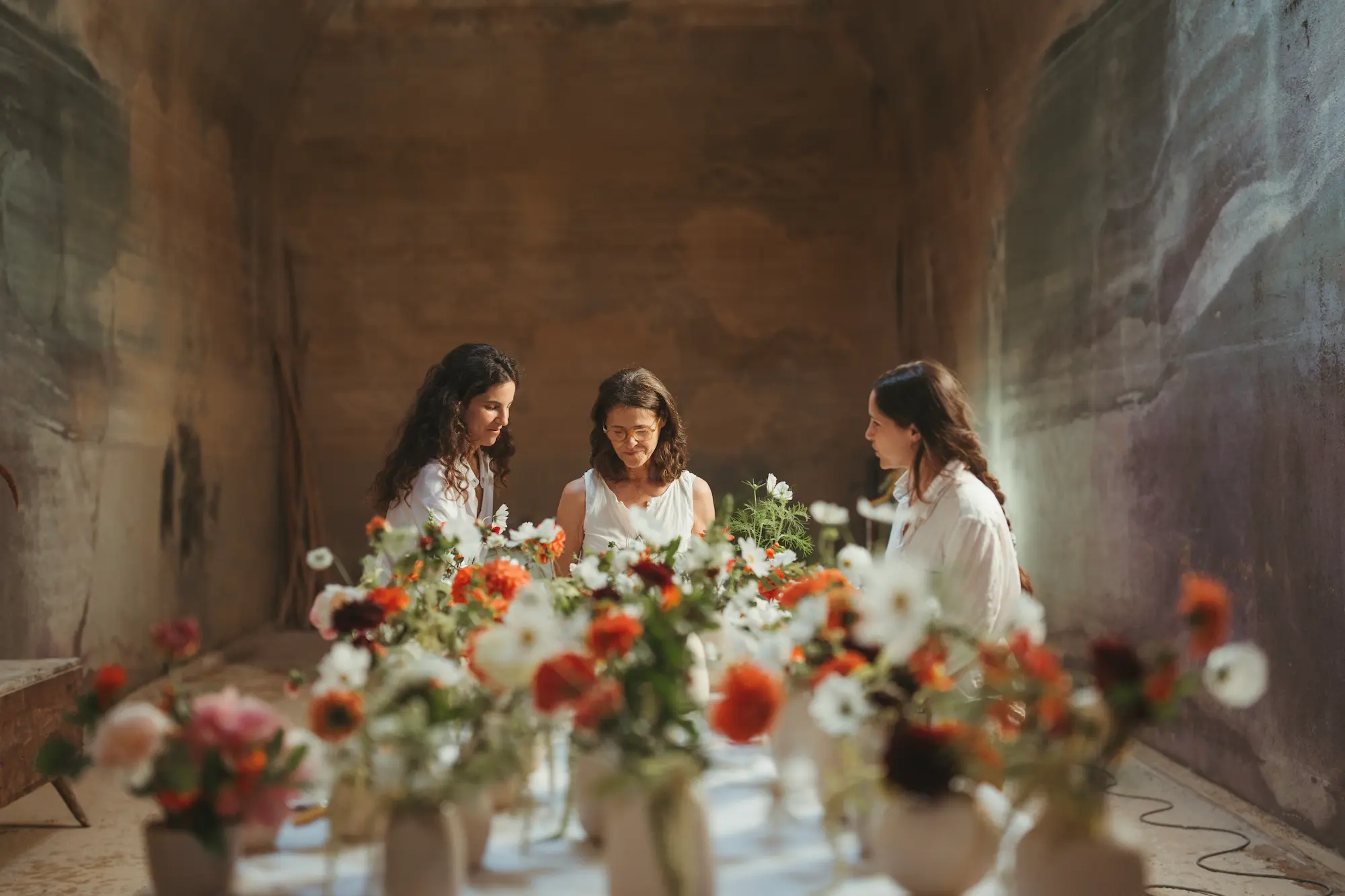
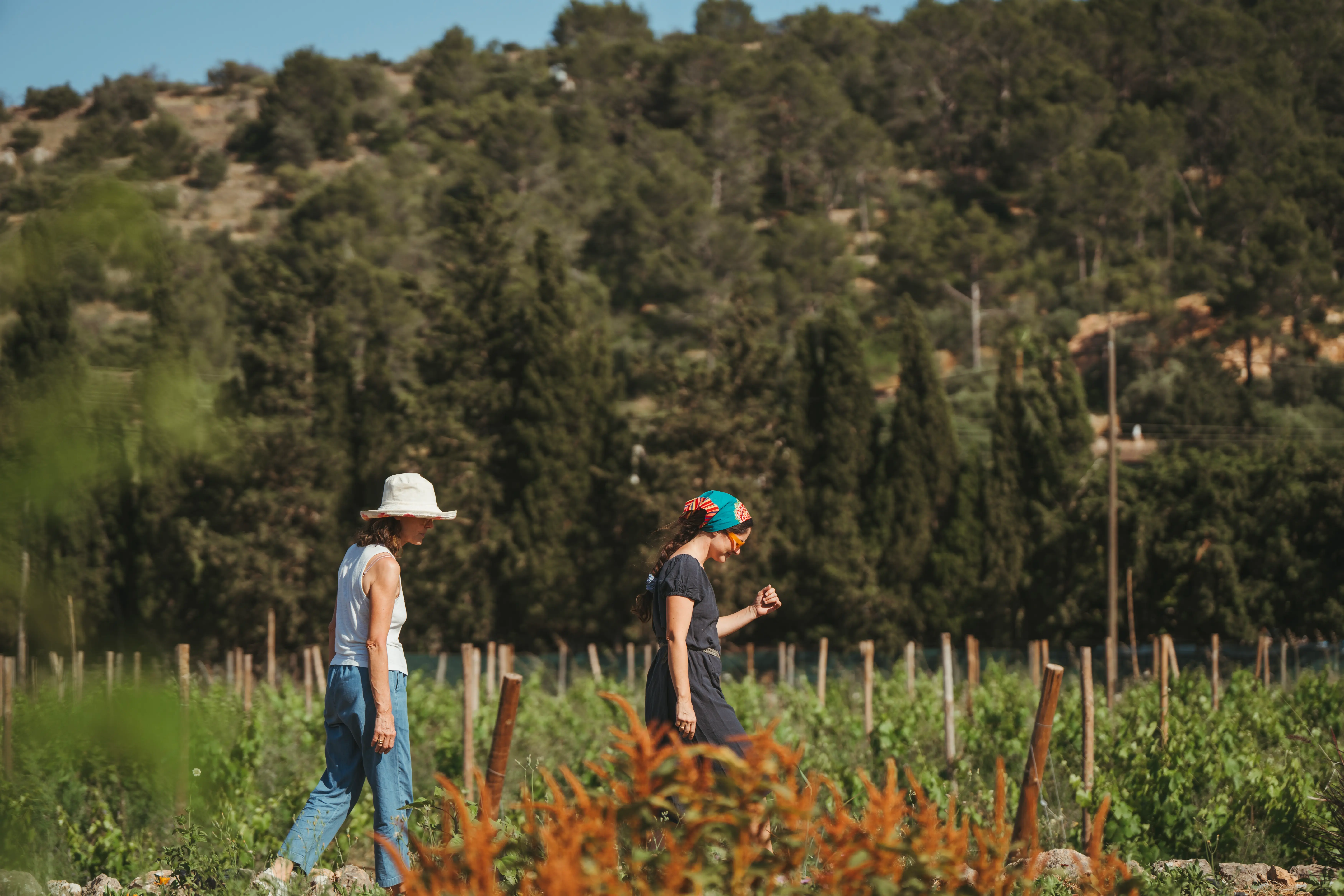
My mother is based in Madrid but spends long periods of time in Mallorca. She mainly contributes to the flower garden and the arrangement side of things, while I focus more on client relationships, presentations, budgets, and design. We’re very close-knit, in constant communication, and always exchanging ideas about our work.
Being by the mountains means the climate is always slightly cooler than the rest of the island, which helps the flowers. Personally, I love having the Alaró mountains as the backdrop to my daily work, it’s truly inspiring.
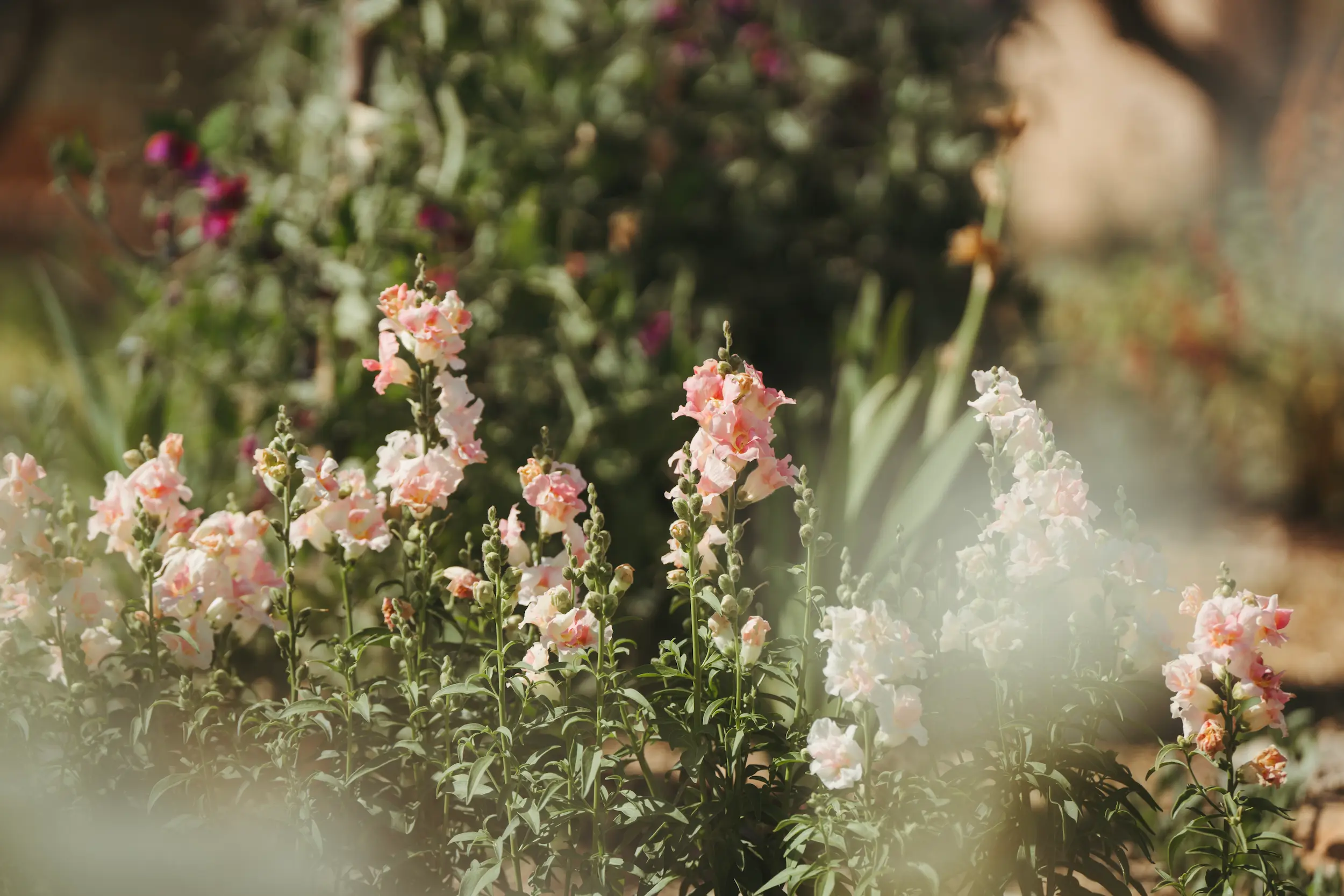
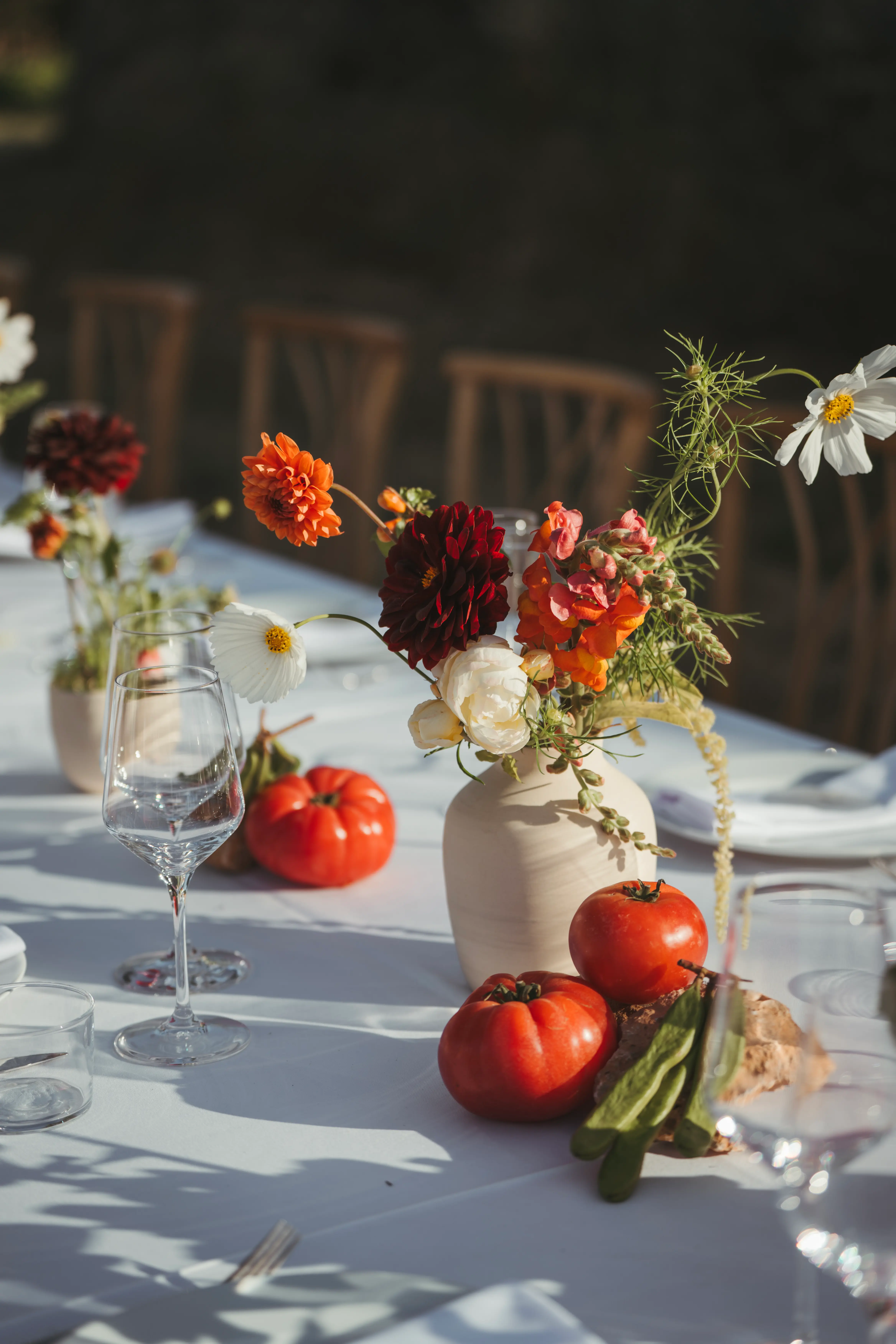
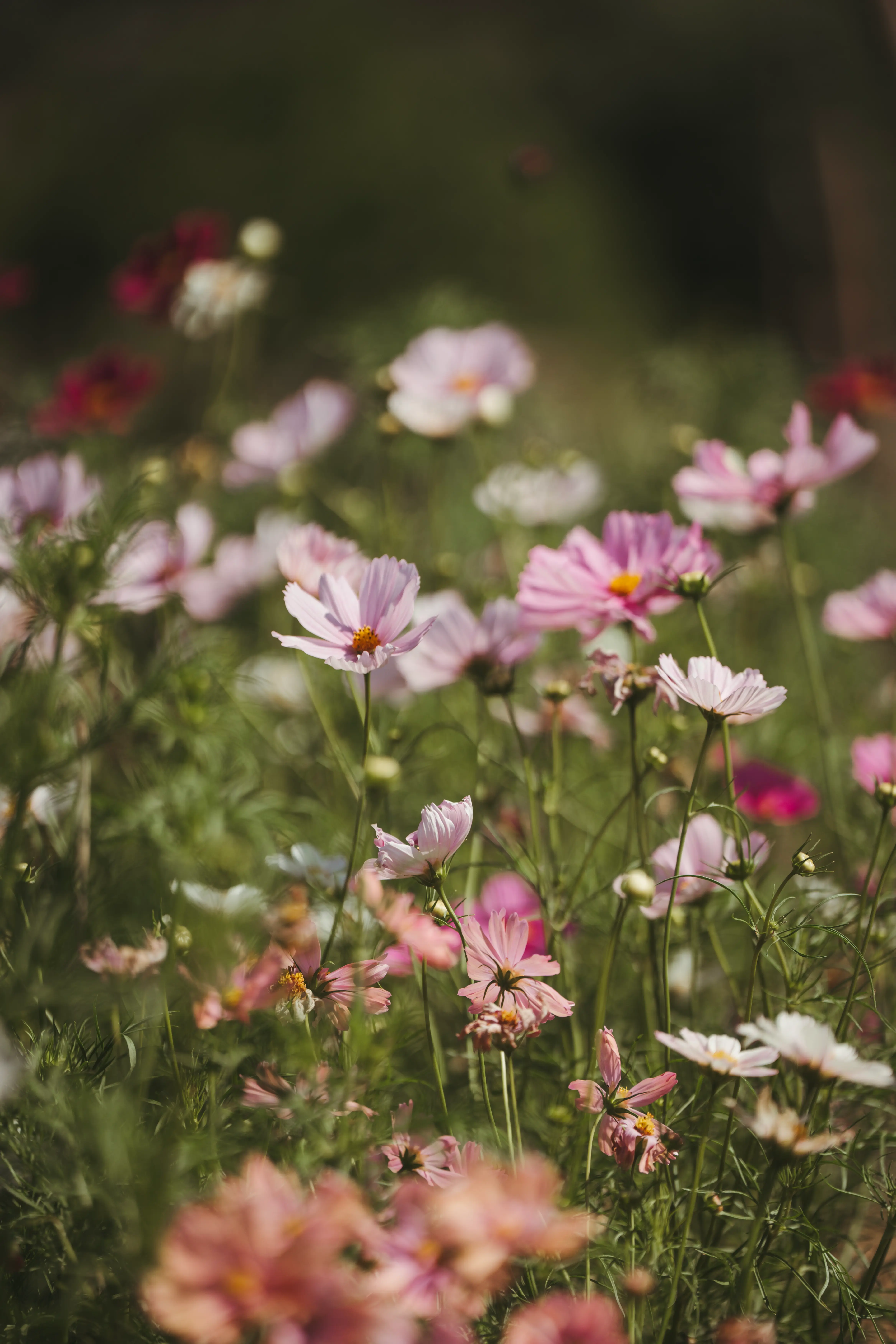
Knitwear design is all about colour, texture, and shape — and I can’t think of a better career to have had before becoming a florist. It gave me an instinctive understanding of composition and layering, which now translates into my floral designs.
Sadly, there’s real awareness around sustainability in food and cosmetics, but almost none in the flower industry. Most flowers available commercially are heavily treated with chemicals to the point where you’d want to wear gloves to handle them, and certainly not bring them close to your face. For me, sustainability in floristry means growing responsibly, avoiding harmful pesticides, and showing people that flowers can be both safe and beautiful without compromising nature.
The design process begins months in advance, when you choose your seeds. From the start, you’re already thinking about colours, seasons, and trends. Locally grown flowers have more life and character — they move, they bend, they feel alive. In contrast, catalogue-ordered flowers all look the same and are often heavily treated with pesticides. For larger events, if I need more blooms, I first reach out to other local growers, then to growers on the peninsula who share my sustainable practices. Only if necessary I do import, and then I try to keep it within Europe.
July and August are the hardest months. Some of the plants go into shock and stop producing. Thankfully, many bounce back in September, almost as if it’s a second spring. To adapt, I focus on planting varieties that can withstand the harsh summer conditions.
Right now we have cosmos, zinnias, scabiosa, dahlias, sunflowers, and amaranth. At the moment I enjoy using sage. Its silver tone pairs beautifully with the autumn colour palette.
I’ve really fallen in love with some unique varieties of sunflowers. I actually sourced the seeds on a recent trip to England, from the Royal Agricultural Society. As autumn feels like a continuation of summer or second spring their bright tones still really work.
I think there’s growing demand — and understanding — for something different. Spain as a whole doesn’t have a strong floral heritage compared to some other countries, but things are changing rapidly. People are becoming more open to new ideas and aesthetics, and Serra Flowers is contributing to that shift by offering a fresh, sustainable, modern-style approach.


